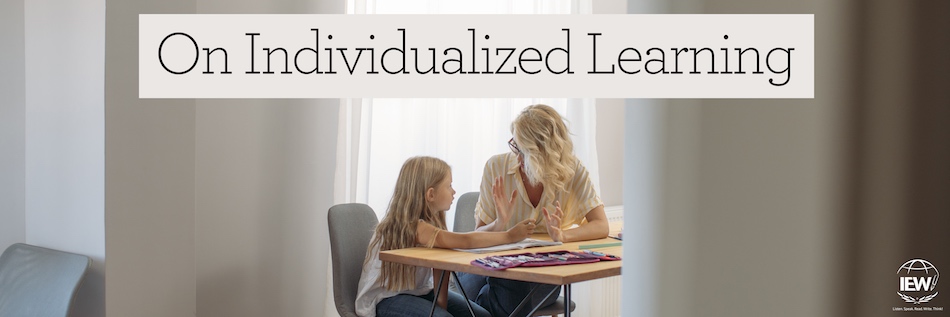
Today’s blog post is written by one of our customer service team members, and yet, remarkably, she’s just completing her junior year in high school! Kathleen shares her unique perspective as not only a student who has appreciated learning in a way that works for her, but who has also begun to help other students find ways to learn that work for them. We hope you enjoy reading about her experience with individualized learning and glean some useful ideas for your own students.
On Individualized Learning
Many parents voice concerns about students who aren’t progressing at the same rate as their siblings or peers. They may be concerned because one child may not seem to be retaining anything, while the other children appear to be learning just fine. They worry that their child may have a learning disability. This may indeed be the case. But sometimes a student simply needs to learn the material in a different way or through a different curriculum. Sometimes it is hard for parents and teachers to tell exactly why one of their students struggles, especially when they are focusing on more than one student in their teaching endeavors. Listening to a lecture for an hour and a half, some people can learn and retain everything they hear, while others, like me, have to discuss and think it out for themselves. It is a matter of testing the waters and figuring out what is right for you and your child.
I was in my freshman year of high school when our family realized that homeschooling was not as scripted as we thought. Up until seventh grade, my brothers and I had all been using the exact same curriculum for seven years. Then, during my seventh and eighth-grade years, we decided to try a five-day-a-week classical private school environment. After two years of being a part of the school, we determined that a five-day-a-week school setting, even though it was classical, was not a suitable fit for us. My brothers and I each had unique learning needs that were not being met in that setting. Because we were used to having our educational needs catered to at home, one of my brothers struggled to keep up with the pace while my other brother and I were finding that the pace was too slow for us and we needed more of a challenge.
Before I was introduced to IEW in a homeschool setting, I had tried different language arts curriculums, hoping they would fit my learning needs. When we decided to transition back to homeschooling, the placement test I took indicated I should begin with tenth grade materials. We promptly purchased everything I needed, and my mom and I began figuring out a schedule for the year. We began the school year thinking we were right on track. However, we soon realized that while that curriculum was amazing for the lower grades, it was very tedious and laborious in the upper grades. Also, it did not quite fit our schedule, which was quickly becoming rather full and hectic. Working with my mom, I slowly started switching out the curriculum for subjects that I was struggling with.
The following year our family moved to Oklahoma so my mom could work at the IEW headquarters instead of remotely as she had been. Around this time we were still tweaking our homeschool materials and had managed to almost completely change the curriculum to things that worked best for me. However, I still hadn’t quite figured out what the best learning style was for me. Being so close to IEW, my brothers and I were able to integrate the IEW writing method into our homeschooling and took various IEW classes. I then joined a co-op that taught history, literature, and theology/philosophy. Through that experience I discovered I learned best using the Socratic method of education. In the one year I spent at the co-op, I not only memorized the facts and information, but I was also able to understand the material that we were memorizing. I knew how to ask the right questions and how to think for myself. I knew how to learn.
I recently had the privilege of tutoring a student who had faced some similar difficulties. The writing class she signed up for was too easy, and she wanted more of a challenge. I offered to tutor her at the next level. Following a similar process as the one I followed when I was searching for the perfect curriculum, we soon landed on the IEW theme-based book Following Narnia, Volume 2. We worked together to adjust the pace and strengthen her weaker areas, which helped her to meet her full writing potential.
Everyone has different strengths and weaknesses. Sometimes parents think they are failing in their teaching efforts because their fifth grader is in pre-algebra while their senior student is barely struggling through geometry. Everyone has their strengths, and everyone can learn. It is a matter of discovering how your child learns the best and finding out what works for them. This is the beauty of homeschooling. When you homeschool, you can speed up the subjects that students are excelling at and slow down the subjects that students are struggling with. Your child will learn and retain significantly more knowledge if their curriculum is adjusted to fit their unique learning needs. Do this, and your child can and will succeed.

